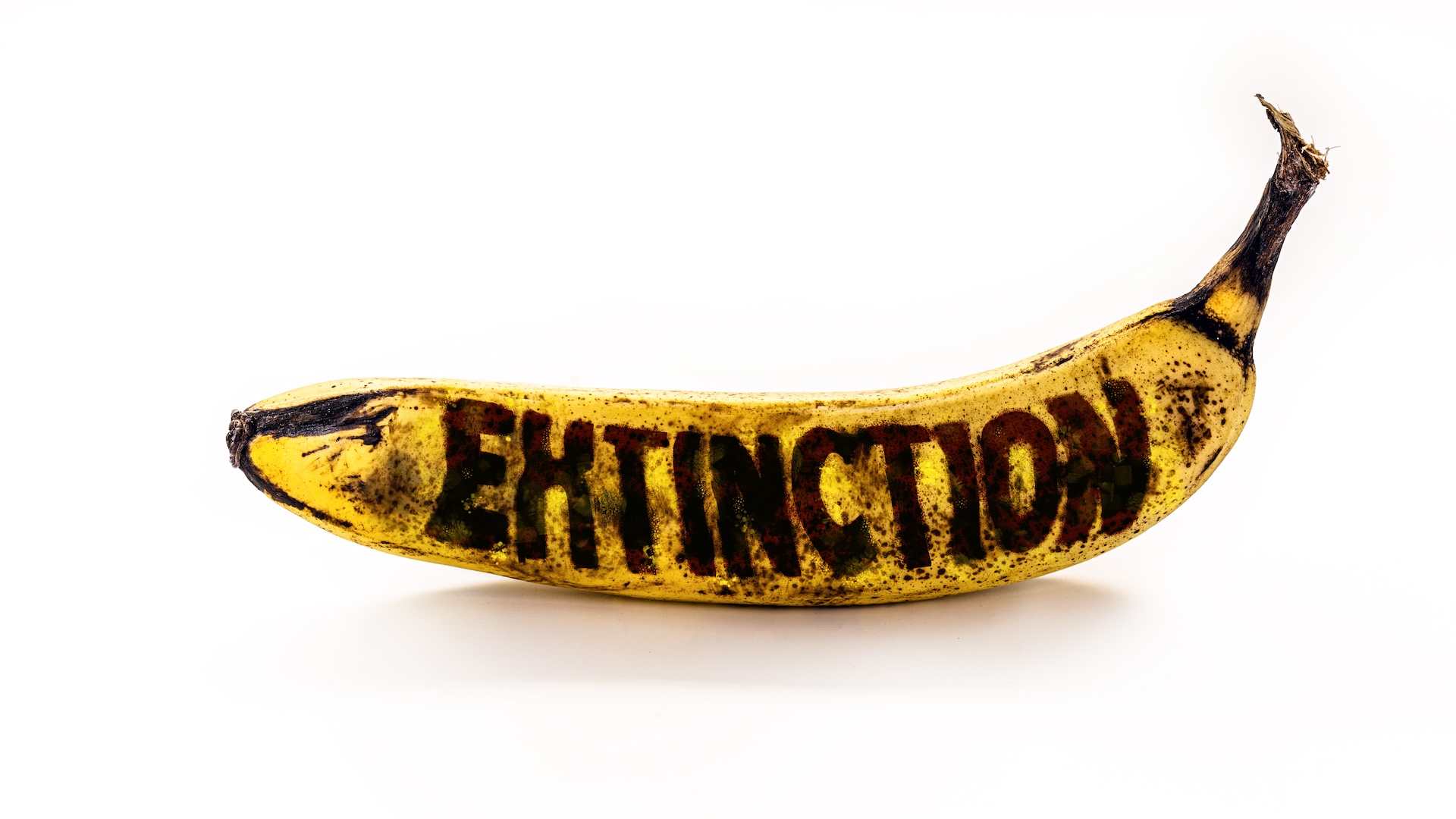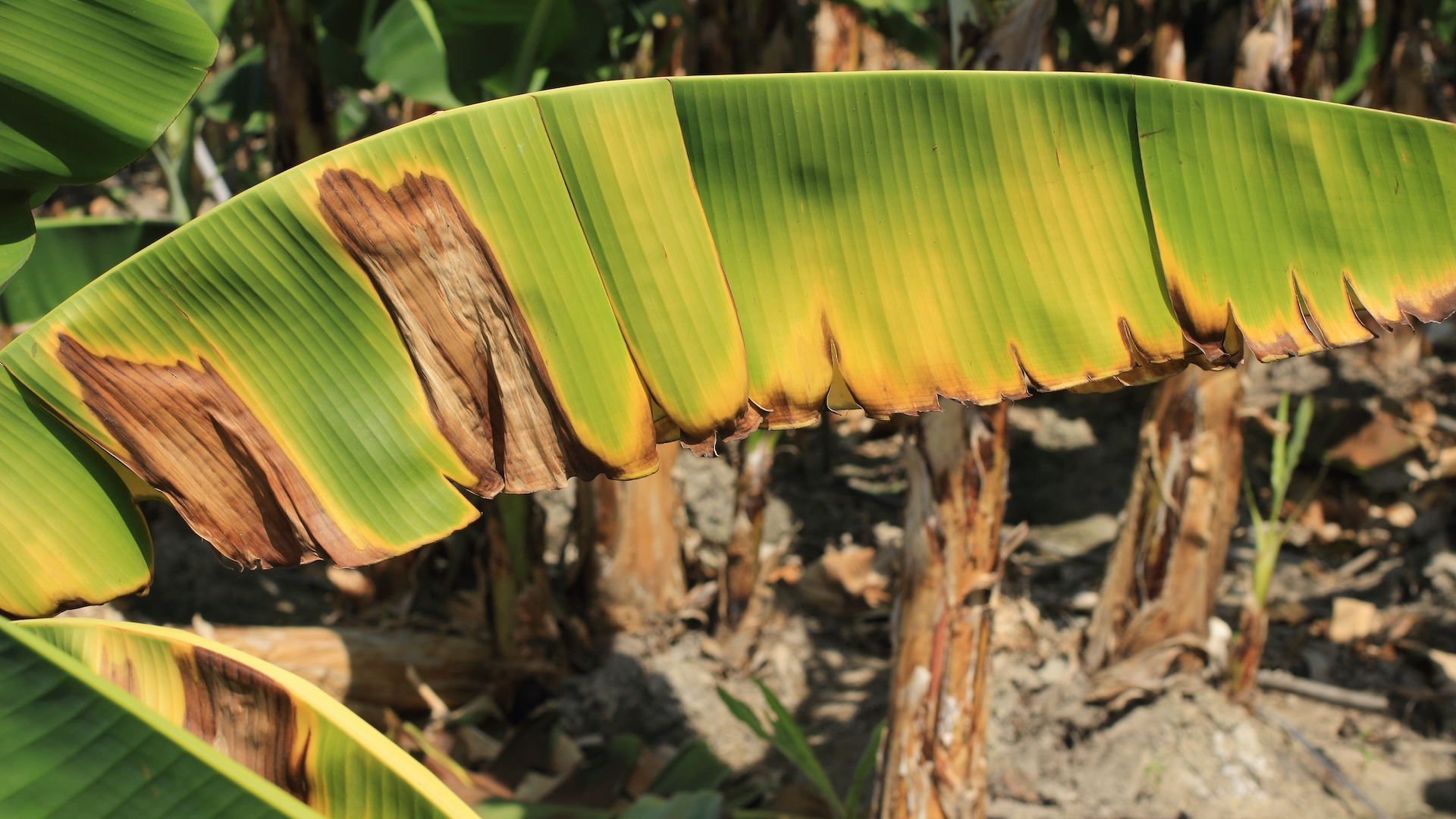'Banana apocalypse' could be averted thanks to genetic breakthrough
Fusarium wilt is threatening the global supply of bananas, but researchers might have found a way to control the disease.

Researchers have made a breakthrough in the race to save the world's bananas from a devastating disease that could wipe them out, according to a new study.
The bananas we eat, called Cavendish bananas, are threatened by a plant-killing disease called fusarium wilt. This disease has already wiped out other banana varieties, and it devastated banana production in the 1950s.
But in the new study, researchers found that the disease strain threatening bananas today didn't evolve from the strain that caused so much damage in the 20th century and that there may be a way to control its spread.
The team's findings, published Friday (Aug. 16) in the journal Nature Microbiology, could help avert an impending "banana apocalypse," according to a statement from the University of Massachusetts Amherst.
"The kind of banana we eat today is not the same as the one your grandparents ate," study senior author Li-Jun Ma, a professor of biochemistry and molecular biology at the University of Massachusetts Amherst, said in the statement. "Those old ones, the Gros Michel bananas, are functionally extinct, victims of the first Fusarium outbreak in the 1950s."
Related: Why are bananas berries but strawberries aren't?
There are many species of wild banana and we farm numerous varieties. Today, the most common banana found in shops is the Cavendish banana from the species Musa acuminata. Almost all of the global banana exports come from this variety, according to the Royal Botanic Gardens, Kew in the U.K.
Sign up for the Live Science daily newsletter now
Get the world’s most fascinating discoveries delivered straight to your inbox.

Cavendish bananas were bred to resist the strain of fusarium wilt that wiped out Gros Michel bananas. However, a second outbreak of fusarium wilt that did affect the Cavendish variety emerged in the 1990s, and the Cavendish has been under threat ever since. Like bananas, fusarium wilt has many varieties, and each affects a different plant host, according to the statement.
When researchers compared 36 Fusarium strains from around the world, they found that the one causing the current outbreak uses genes that produce fungal nitric oxide to attack hosts, according to the study. The team doesn't know how these genes lead the disease to infect Cavendish bananas. However, they found that the disease's virulence — its capacity to damage a host — was reduced when the genes were eliminated, so reducing the nitric oxide could be key to controlling the disease.
Although the new study could help save our favorite bananas, Ma noted that monocropping — growing the same crop every year — is the underlying problem facing bananas, and they will be vulnerable to disease as long as we continue to rely on a single variety.
"When there's no diversity in a huge commercial crop, it becomes an easy target for pathogens," Ma said. "Next time you're shopping for bananas, try some different varieties that might be available in your local specialty foods store."

Patrick Pester is the trending news writer at Live Science. His work has appeared on other science websites, such as BBC Science Focus and Scientific American. Patrick retrained as a journalist after spending his early career working in zoos and wildlife conservation. He was awarded the Master's Excellence Scholarship to study at Cardiff University where he completed a master's degree in international journalism. He also has a second master's degree in biodiversity, evolution and conservation in action from Middlesex University London. When he isn't writing news, Patrick investigates the sale of human remains.









